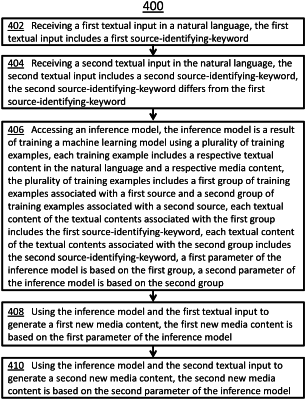| CPC G10L 15/063 (2013.01) [G10L 15/18 (2013.01); G10L 2015/0631 (2013.01)] | 20 Claims |

|
1. A non-transitory computer readable medium storing a software program comprising data and computer implementable instructions that when executed by at least one processor cause the at least one processor to perform operations for attributing generated audio contents to training examples, the operations comprising:
receiving a first audio content generated using a generative model, the generative model is a result of training a machine learning model using a plurality of training examples, each training example of the plurality of training examples is associated with a respective audio content;
determining one or more properties of the first audio content;
for each training example of the plurality of training examples, analyzing the respective audio content to determine one or more properties of the respective audio content;
using the one or more properties of the first audio content and the properties of the audio contents associated with the plurality of training examples to attribute the first audio content to a first subgroup of at least one but not all of the plurality of training examples;
determining that the training examples of the first subgroup are associated with a first at least one source; and
for each source of the first at least one source, updating a respective data-record associated with the source based on the attribution.
|